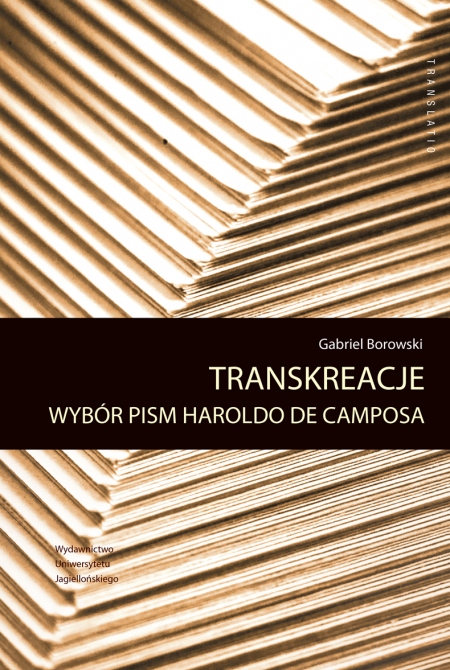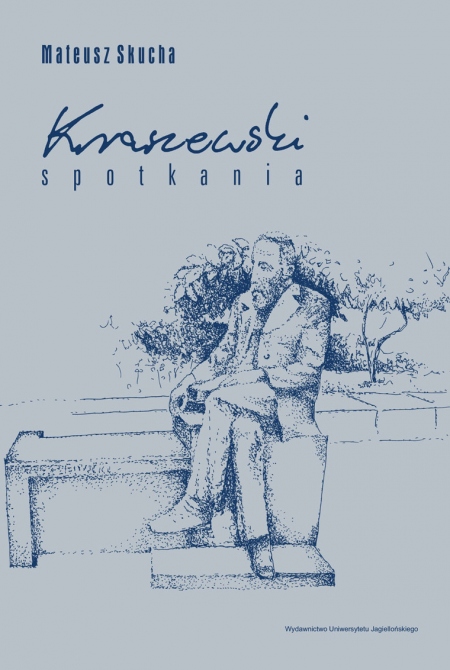
Transkreacje
Wybór pism Haroldo de Camposa
Series: TRANSLATIO
Pages: 190
Book format: 15,5x23,5 cm
Publication date: 2024
Publication date: 19.09.2024
Book description
The essays collected in this anthology allow to trace the evolution of Haroldo de Campos' translation thought since the early 1960s. Each text combines and at the same time transcends the conceptual apparatuses proper to translation scholars, literary scholars, linguists, cultural scholars and philosophers, among others, revealing the profile of a thinker who moves freely above the institutional, top-down divisions into domains of knowledge.
Campos continues to surprise not only with the linguistic, historical and cultural scope of his considerations, but also with their relevance. This can be seen in the singular approach to each translation endeavor (as reflected in numerous neologisms, the most popular of which are transcreation, reimagination, transpoetization, transparadization and transluciferation), which foreshadows postmodern small-range theories, poetics and languages of interpretation flowing not from an abstract, top-down model, but from direct contact with the object of inquiry. The Brazilian poet seems to advocate for a shift from the search for a single theory - even if it takes a dualistic form, like most contemporary travesties of the opposition between foreignization and domestication - to a multiplicity of theories constructed ad hoc in the encounter with a given text. Also important in today's view is the widening of the boundaries of the concept of translation, evident in Campos' sketches, to include all forms of transformation of the original text.
This volume is the first such comprehensive collection of the author's theoretical texts on translation published outside his country of origin, accompanied by a pioneering critical study of the sketches resulting from years of research into the legacy of the Brazilian polyglot. Each essay is enriched by commentaries addressing not only aspects of the original that are difficult to render and elements of Lusophone cultures that are unfamiliar to a Polish audience, but also covering the meanings of most of the terms, references to other works by the author, historical-literary remarks, and suggestions for further considerations.
Campos continues to surprise not only with the linguistic, historical and cultural scope of his considerations, but also with their relevance. This can be seen in the singular approach to each translation endeavor (as reflected in numerous neologisms, the most popular of which are transcreation, reimagination, transpoetization, transparadization and transluciferation), which foreshadows postmodern small-range theories, poetics and languages of interpretation flowing not from an abstract, top-down model, but from direct contact with the object of inquiry. The Brazilian poet seems to advocate for a shift from the search for a single theory - even if it takes a dualistic form, like most contemporary travesties of the opposition between foreignization and domestication - to a multiplicity of theories constructed ad hoc in the encounter with a given text. Also important in today's view is the widening of the boundaries of the concept of translation, evident in Campos' sketches, to include all forms of transformation of the original text.
This volume is the first such comprehensive collection of the author's theoretical texts on translation published outside his country of origin, accompanied by a pioneering critical study of the sketches resulting from years of research into the legacy of the Brazilian polyglot. Each essay is enriched by commentaries addressing not only aspects of the original that are difficult to render and elements of Lusophone cultures that are unfamiliar to a Polish audience, but also covering the meanings of most of the terms, references to other works by the author, historical-literary remarks, and suggestions for further considerations.
Language
Polish
Title in English
Transcreation: selected writings by Haroldo de Campos
Edition
first
Authors
Gabriel Borowski
Cover design
Agnieszka Mitoraj
ISBN: 978-83-233-5369-0
e-ISBN (pdf): 978-83-233-7553-1
Country of producer: Poland
RECOMMENDED BOOKS
NEW BOOKS

Choose chapters to buy:
Order value:
0.00 zł
























